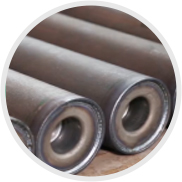 Afrikaans
Afrikaans  Albanian
Albanian  Amharic
Amharic  Arabic
Arabic  Armenian
Armenian  Azerbaijani
Azerbaijani  Basque
Basque  Belarusian
Belarusian  Bengali
Bengali  Bosnian
Bosnian  Bulgarian
Bulgarian  Catalan
Catalan  Cebuano
Cebuano  Corsican
Corsican  Croatian
Croatian  Czech
Czech  Danish
Danish  Dutch
Dutch  English
English  Esperanto
Esperanto  Estonian
Estonian  Finnish
Finnish  French
French  Frisian
Frisian  Galician
Galician  Georgian
Georgian  German
German  Greek
Greek  Gujarati
Gujarati  Haitian Creole
Haitian Creole  hausa
hausa  hawaiian
hawaiian  Hebrew
Hebrew  Hindi
Hindi  Miao
Miao  Hungarian
Hungarian  Icelandic
Icelandic  igbo
igbo  Indonesian
Indonesian  irish
irish  Italian
Italian  Japanese
Japanese  Javanese
Javanese  Kannada
Kannada  kazakh
kazakh  Khmer
Khmer  Rwandese
Rwandese  Korean
Korean  Kurdish
Kurdish  Kyrgyz
Kyrgyz  Lao
Lao  Latin
Latin  Latvian
Latvian  Lithuanian
Lithuanian  Luxembourgish
Luxembourgish  Macedonian
Macedonian  Malgashi
Malgashi  Malay
Malay  Malayalam
Malayalam  Maltese
Maltese  Maori
Maori  Marathi
Marathi  Mongolian
Mongolian  Myanmar
Myanmar  Nepali
Nepali  Norwegian
Norwegian  Norwegian
Norwegian  Occitan
Occitan  Pashto
Pashto  Persian
Persian  Polish
Polish  Portuguese
Portuguese  Punjabi
Punjabi  Romanian
Romanian  Russian
Russian  Samoan
Samoan  Scottish Gaelic
Scottish Gaelic  Serbian
Serbian  Sesotho
Sesotho  Shona
Shona  Sindhi
Sindhi  Sinhala
Sinhala  Slovak
Slovak  Slovenian
Slovenian  Somali
Somali  Spanish
Spanish  Sundanese
Sundanese  Swahili
Swahili  Swedish
Swedish  Tagalog
Tagalog  Tajik
Tajik  Tamil
Tamil  Tatar
Tatar  Telugu
Telugu  Thai
Thai  Turkish
Turkish  Turkmen
Turkmen  Ukrainian
Ukrainian  Urdu
Urdu  Uighur
Uighur  Uzbek
Uzbek  Vietnamese
Vietnamese  Welsh
Welsh  Bantu
Bantu  Yiddish
Yiddish  Yoruba
Yoruba  Zulu
Zulu steel guide roller
Understanding Steel Guide Rollers A Comprehensive Overview
Steel guide rollers are essential components widely used in various industrial applications, including manufacturing, construction, and transportation. Their primary function is to facilitate the smooth movement of machinery, conveyor belts, and other mechanical systems. This article delves into the significance, types, materials, and applications of steel guide rollers, shedding light on why they are vital to modern industrial operations.
Importance of Steel Guide Rollers
The primary purpose of steel guide rollers is to reduce friction and wear in mechanical systems. By providing a smooth and stable surface for dynamic loads, these rollers improve the efficiency and longevity of machinery. In industries where precision and reliability are paramount, such as automotive manufacturing or packaging, steel guide rollers play a critical role in ensuring uninterrupted operations.
Moreover, the load-bearing capabilities of steel guide rollers allow them to support substantial weights, which is particularly significant in heavy-duty applications. Their strength and durability mean that they can withstand harsh operating environments, including extreme temperatures and exposure to corrosive substances.
Types of Steel Guide Rollers
Steel guide rollers can be categorized based on several factors, including design, application, and the type of bearing used. Here are the most common types
1. Flat Guide Rollers These rollers have a flat surface and are typically used for guiding conveyor belts. Their design minimizes wear on both the roller and the belt, leading to reduced maintenance needs.
2. V-Groove Rollers Shaped like a “V,” these rollers are ideal for guiding tracks and lines. They help maintain alignment, ensuring that machinery operates accurately and efficiently.
3. Heavy-Duty Rollers Designed for extreme conditions, heavy-duty steel guide rollers are made to handle significant loads and provide stability in rugged environments. These rollers are used in applications ranging from construction equipment to large industrial machines.
4. Adjustable Rollers These rollers allow for height and position adjustments, making them versatile in various applications. Their adaptability provides a solution for machines requiring precise movements due to changing conditions.
Material Considerations
Steel guide rollers are made from various steel grades, each offering different properties suited to specific applications
. Common materials includesteel guide roller

- Carbon Steel Known for its durability and strength, carbon steel is often used in general-purpose guide rollers.
- Stainless Steel The corrosion resistance of stainless steel makes it suitable for environments exposed to moisture or chemicals. This type of roller is prevalent in food processing and pharmaceutical industries.
- Alloy Steel Alloy steel offers superior strength and toughness, making it ideal for heavy-duty applications that require high performance under challenging conditions.
The choice of material impacts the roller's performance, resistance to wear, and overall lifespan. Manufacturers often employ a combination of materials and coatings to enhance durability and performance further.
Applications of Steel Guide Rollers
Steel guide rollers find applications across various industries due to their versatility. Some notable examples include
1. Automotive Manufacturing Rollers are extensively used in assembly lines to ensure that parts are guided smoothly from one station to another, enhancing productivity and precision.
2. Conveyor Systems In warehouses and logistics, guide rollers assist conveyor belts in transporting goods efficiently, reducing downtime and energy consumption.
3. Construction Equipment Steel guide rollers are integral to equipment like cranes and excavators, where they ensure proper alignment and movement of heavy loads.
4. Packaging Machinery These rollers help guide films, boxes, and containers through packaging lines, ensuring that products are packaged accurately and efficiently.
5. Textile Industry In textile manufacturing, guide rollers are used to manage the movement of fabrics through multiple stages of production, thus maintaining quality and reducing wastage.
Conclusion
As industries continue to evolve and demand greater efficiency, the importance of components like steel guide rollers cannot be overstated. Their ability to reduce friction, support heavy loads, and adapt to various applications makes them indispensable in modern machinery and manufacturing processes. Understanding their types, materials, and applications can help businesses make informed decisions when selecting the appropriate rollers for their operations. As technology advances, it is likely we will see continued innovations in the design and materials used for steel guide rollers, further enhancing their capabilities in the industrial sector.
-
Revolutionizing Conveyor Reliability with Advanced Rubber Lagging PulleysNewsJul.22,2025
-
Powering Precision and Durability with Expert Manufacturers of Conveyor ComponentsNewsJul.22,2025
-
Optimizing Conveyor Systems with Advanced Conveyor AccessoriesNewsJul.22,2025
-
Maximize Conveyor Efficiency with Quality Conveyor Idler PulleysNewsJul.22,2025
-
Future-Proof Your Conveyor System with High-Performance Polyurethane RollerNewsJul.22,2025
-
Driving Efficiency Forward with Quality Idlers and RollersNewsJul.22,2025





























